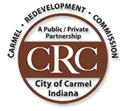Compiled by Adam Aasen
What Happened: A public commenter questioned Mayor Jim Brainard and the City Council about who was responsibility for cutting street repair budgets over the years.
What It Means: Bob Wallace, a regular attendee at council meetings, gave a detailed presentation with budget figures during the public comment portion of the meeting. Street repair is a main focus, which affects drainage issues in areas such as Emerson Road and potholes throughout the city. Brainard claims he never wanted to cut the street repairs fund, but the City Council forced him to cut the budget and there was no other place to do it. Councilor Rick Sharp disagreed, saying he asked the mayor to make cuts elsewhere. Councilor Kevin “Woody” Rider said both sides are somewhat inaccurate because he remembers the council and Brainard mutually agreeing to cut the streets budget.
What’s Next: With the new Storm Water utility bringing in revenue, it should alleviate some street repairs concerns.
What Happened: The City Council questions the Carmel Redevelopment Commission (CRC) about the recent report on tax increment finance (TIF) revenue shortfalls.
What It Means: As reported in Current weeks ago, the CRC recently hosted a presentation from Umbaugh and Associates about projected TIF revenue and ongoing debt obligations. The CRC faces $43 million in shortfalls over the life of its debts, but CRC officials say they fortunately had to foresight to set up a reserve fund – from the Parkwood TIF district – that can cover these shortfalls. Sharp said, “It is so razor-thin,” that the budget needs to be confronted now before it becomes a problem. City Councilor Sue Finkham said she believes assessed values will increase – which is not considered in projections – which means more tax revenue. In the past, Brainard circulated a chart (see below) that he said shows that there is sufficient funds to cover any debt payments.
What’s Next: The debate continues…
What Happened: An ordinance remain in committee regarding the Edward Rose development using TIF district money to repay bonds.
What It Means: The developer is asking the council to allow it to use 75 percent of all TIF money raised as a result of their new project, an $80 million mixed-used development called The District located near the Old Meridian roundabout. This project is projected to raise about $11 million in revenue for the developer to repay bonds, which would be secured by the developer and will not present risk to the city.
What’s Next: The Finance, Administration and Rules Committee will hold a special meeting at 5:30 p.m. on Aug. 11 to deal with this issue only. If everything holds, construction could be complete by 2018.
What Happened: The council approved sale of 7th Street property to Old Town Development group.
What it Means: As previously reported, Justin Moffett’s group made a bid of $65,000 – below the $203,000 assessed value – but improvements to the surrounding area, such as drainage and a pocket park, creates total offer value of far more than $200,000. So councilors felt it was a great improvement to the area.
What’s Next: The sale was approved.
What Happened: The council approved City Engineer Jeremy Kashman as the new head of the Storm Water Utility.
What it Means: Kashman, who was appointed to his current position earlier this year, was the choice to lead the new utility because he already deals closely with storm water and drainage issues. Brainard mentioned there would have been so much overlap between his department and this new utility that it only made sense that he would lead it. Some wondered how much of his time would be dedicated to each role, but no major objections were voiced.
What’s Next: Kashman begins instituting the new utility with the city council as an approval board.



